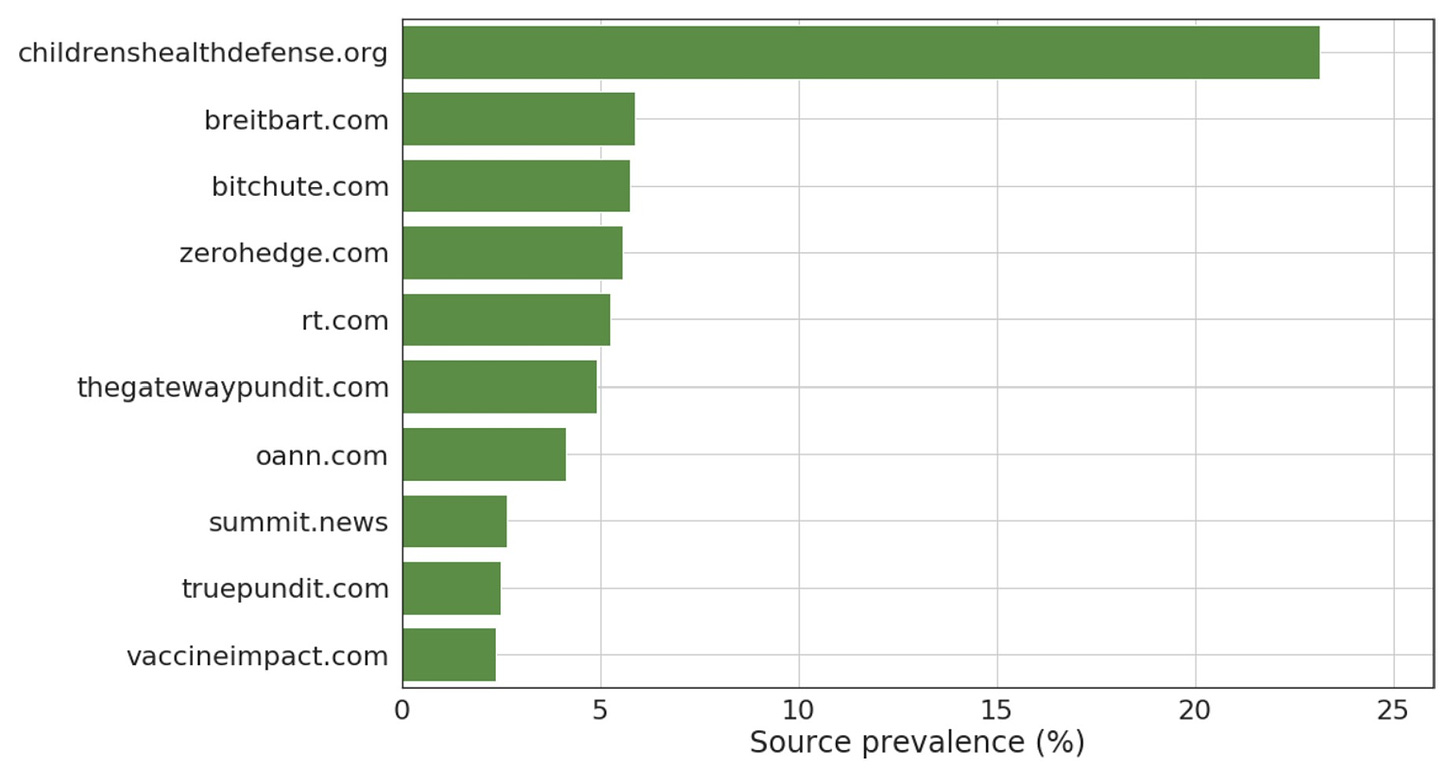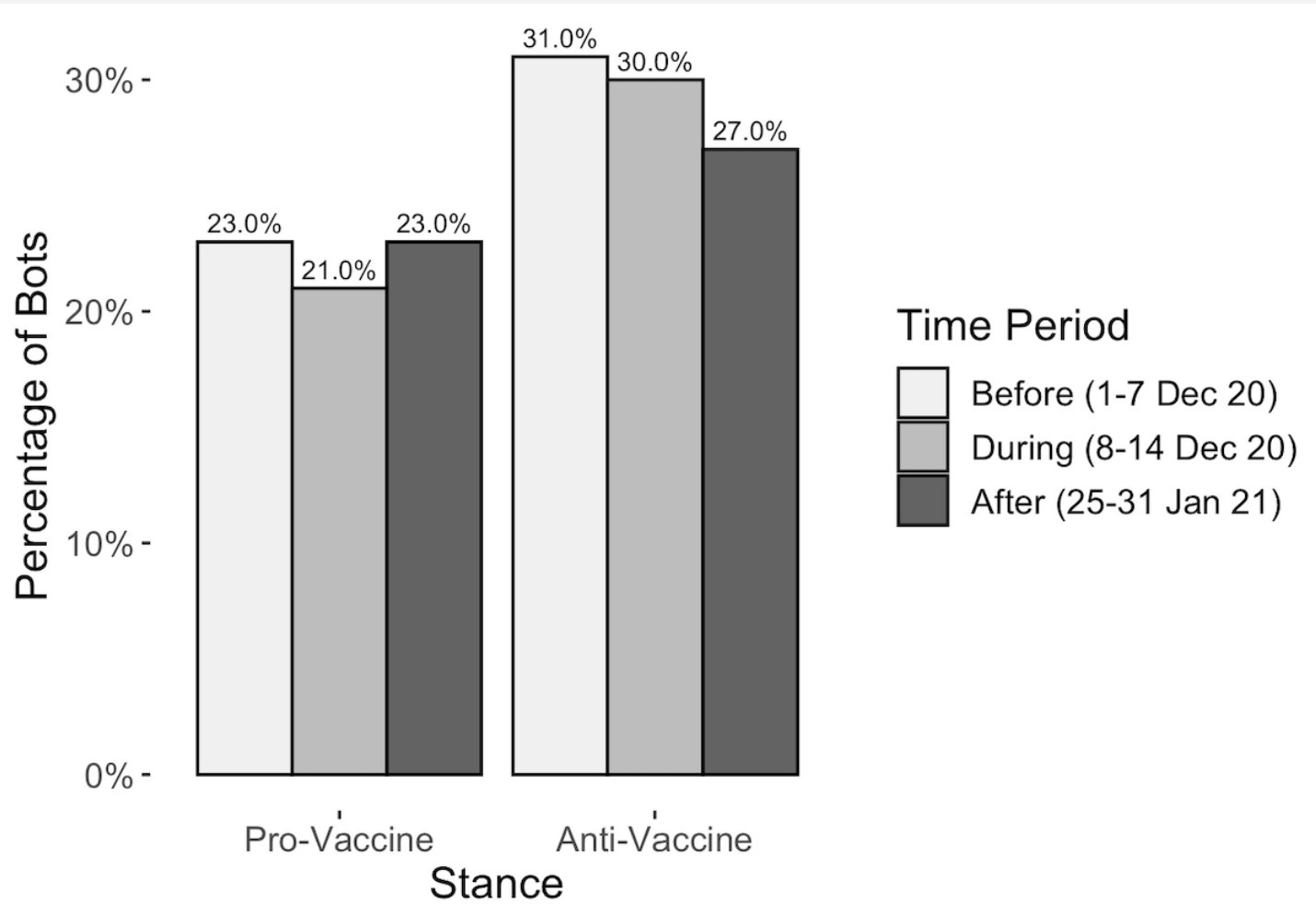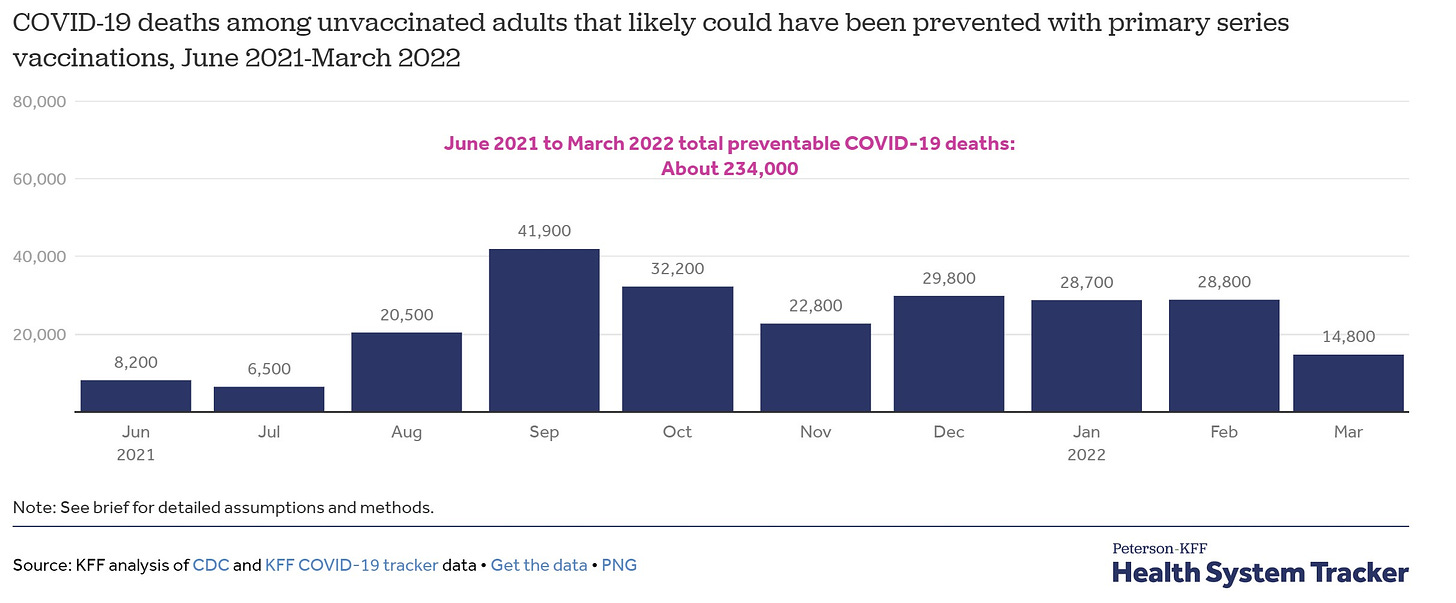Rumors around COVID-19 vaccines and death, like the Died Suddenly video we highlighted earlier this week, aren’t random. Disinformation campaigns are deliberate, often orchestrated, and highly effective in confusing people enough to change behaviors, like not getting the COVID-19 vaccine. And it’s a very lucrative business. Malicious rumors continue to be a massive challenge in public health, but we aren’t hopeless. There are things that can be done.
Note: Disinformation is different than misinformation. Disinformation is false information which is deliberately intended to mislead. Misinformation is misleading information without malicious intent. Both are different than healthy scientific debate.
Landscape
Rumors, stigma, and conspiracy theories related to the pandemic are everywhere. One study found that in the infancy of the pandemic (April 2020), they were present in 85 countries and in 25 different languages. The countries with the highest levels? India followed by the U.S. and China.
Analyses have found that 12 people—coined the “disinformation dozen”—are responsible for 65% of misleading claims, rumors, and lies about COVID-19 vaccines on social media. Their impact is most effective on Facebook (account for up to 73% of Facebook rumors), but also bleed into Instagram and Twitter. A scientific study published in Nature found that 1 in 4 anti-COVID-19 vaccine tweets originated from the so-called Children’s Health Defense—which is controlled by one man.

Bots — or automated accounts on social media used to spread online disinformation— have been successfully used to manipulate democracies. They are starting to be used for public health topics, too, like e-cigarettes and medications.
During the pandemic, research found accounts linking to coronavirus information from less reliable sites were more likely to be bots. Another study found that bot activity the weeks before and after the original COVID-19 vaccine roll-out were present for pro- and anti-vaccine content. However, it was particularly high for anti-COVID-19 vaccines and highest leading up to the roll-out.

As Georgetown’s Center for Security reported, amplification of disinformation campaigns will get worse with the rise of artificial intelligence and machine learning.
Why does it work so well?
False information goes farther, faster, deeper and more broadly than the truth. One study (published in 2018—before the pandemic) found false news was 6 times faster at spreading than the truth, reached far more people, and was more broadly diffused.
Why does false news spread so quickly? There are specific tactics used to ensure that information goes viral:
Leverage social media. Our information ecosystem is very different than it used to be. We have social media. It's a huge part of how people get their news and the greatest source of health information worldwide.
Exploit information gaps quickly. “A lie can go around the world before the truth gets its pants on.” It takes an order or magnitude more effort to refute rumors than to invent them (This is called Brandolini’s Law). Filling the information void quickly is key. We saw this with the NFL injury, for example.
Fail to provide context. Vaccine rumors are intentionally vague. Specifics are not narrowed down; conditions that may seem the same to an untrained person, but to a medical professional are entirely distinct. (Myocarditis is not caused by a blood clot.) Different hypotheses are blended together allowing proponents to shift from one to the other when the data doesn’t turn out like they expected.
Kernel of truth. Almost all vaccine rumors have a kernel of truth–something that is true but then distorted, taken out of context, or exaggerated. For example, VAERS does say that more than 18,000 people have died after the vaccine. However, this is taken out of context given the surveillance system and post hoc fallacy.
Sowing doubts about scientific consensus. This was famously done in the 1960’s from big tobacco: companies funding sham studies. Researchers found this tactic was intentionally used with vaccines during the pandemic.
Exaggerate partisan grievances. Harvard identified the most common narratives of COVID-19 disinformation were “corrupt elites,” “freedom under siege,” and “health freedom.”
Presenting fringe views as mainstream. This was dangerously on display last Friday when the BBC invited a prominent anti-vaxxer on TV to talk about statins, but instead hijacked the conversation and pivoted to mRNA vaccines leading to death. This was dangerous because using airtime from a “legitimate” mainstream media source gives the rumors credibility. He knew it too, as he continues to tote the fact that he made it on BBC getting tens of thousands of likes.
Effective
Social media is a domain for manipulating beliefs and ideas. The danger is that it ultimately leads to real-world actions, such as not to vaccinate.
The Kaiser Family Foundation found that between June 2021 and March 2022, 234,000 deaths could have been prevented with the primary series of vaccinations.
The impact of these rumors will bleed into other vaccines. A recent MMWR paper found only 14 states have ≥95% coverage of the MMR vaccine among kindergarteners; 13 states have <90% coverage.
The danger is that infectious diseases violate the assumption of independence. One person’s actions directly impact the person next to them. We are seeing this in the Ohio measles outbreak, where some children hospitalized are only partially vaccinated because they weren’t old enough for the complete series.
Why spread rumors?
Why would people intentionally push a rumor? It’s simple: To turn a profit. Disinformation campaigns, like COVID-19 vaccines, turns out to be incredibly lucrative business model. The Center for Countering Digital Hate outlined this clearly. Some examples include:
Joseph Mercola uses health disinformation to promote the sale of supplements, books and food. During the height of the pandemic, he promoted a new website designed to prevent or treat COVID-19 with alternative remedies. His business has a net worth of $100 million.
Robert F. Kennedy Jr is the leading anti-vaxxer of the pandemic, as he owns the Children’s Health Defense. He gained more than 1 million followers in 2020 and traffic to his website rose sharply in March 2021 with 2.35 million visits.
What to do about disinformation?
Treat it like the public health problem it is: Investment, surveillance, prevention, intervention. Establish public-private partnerships. Integrate education into schools, like Finland, who has started educating their youth about disinformation.
On an individual-level, combating every rumor that pops up will be a game of whack-a-mole. Researchers have found that education about disinformation tactics makes people more likely to reject disinformation. Some examples include:
Games, like the GoViral, teaches people how information is manipulated.
Creative videos, like by Truth Labs for Education, educating on different tactics, like scapegoating:
Bottom line
Twelve people are responsible for 65% of disinformation about COVID-19 vaccines on social media. It’s coordinated, effective, lucrative, and costs lives. This is true during the pandemic and it will be true for other public health problems. It’s a public health and biosecurity threat. And we need to treat it like one.
Love, YLE
“Your Local Epidemiologist (YLE)” is written by Dr. Katelyn Jetelina, MPH PhD—an epidemiologist, data scientist, wife, and mom of two little girls. During the day she works at a nonpartisan health policy think tank and is a senior scientific consultant to a number of organizations, including the CDC. At night she writes this newsletter. Her main goal is to “translate” the ever-evolving public health science so that people will be well equipped to make evidence-based decisions. This newsletter is free thanks to the generous support of fellow YLE community members. To support this effort, subscribe below:







Look who showed up in my "In Box" from Politico Pulse! "LOOKING FOR THE WORDS — Public health experts, from CDC officials to leading epidemiologists and doctors, say they need better ways to communicate with the public, citing trust issues and ineffective messaging through the pandemic.
Now, new approaches are emerging, though some experts worry they’re uncommon and not always taken seriously in larger pandemic preparedness discussions.
Still, widespread dissatisfaction over Covid-19 messaging means scattered new initiatives could hold clues to the future of public-facing health communications — particularly a move to more local, accessible, regular interactions with the public.
Starting a conversation
Katelyn Jetelina, epidemiologist and professor at the University of Texas Health Science Center, is among the scientists and doctors who seem to be making breakthroughs.
Since creating a much-read newsletter, Your Local Epidemiologist , during the pandemic to explain public health issues, Jetelina has been part of health communications conversations with government officials in the U.S. and abroad.
The newsletter started as an email to faculty, students and staff to explain the data trickling in early in the pandemic. It eventually moved online and now has a Spanish-language version. She estimates it’s gotten about 300 million hits so far.
Approaches like Your Local Epidemiologist’s — proactive, explanatory and conversational — have been eyed by CDC officials as it considers how to move beyond pandemic messaging missteps .
But Jetelina said messaging changes will likely need to go beyond governments (though she said far more needs to be done on that front) to health systems more broadly, especially at the local level."
Congratulations, while I still think you/she are/is writing just for me, it's nice to read about your impact.
According to the CDC's website, only 15.3% of the population has gotten the bivalent booster (link below).
Is this low uptake because of mis-information and dis-information? Or is it because the American people have concluded - for a variety of reasons based on truths they see with their own eyes - that the current generation of vaccines just aren't living up to their promise? This disillusionment cuts across all age groups, geographies, races, political parties, genders, education, you name it. The vast majority of Americans are DONE with the current generation of vaccines.
From a policy standpoint, if the vast majority of Americans are DONE with the current generation of vaccines, what good is it to blame low uptake on the dis/mis-informationists? Wouldn't it be better for our country for policy makers to focus on the future, taking in to account the reality that the American people have spoken and their minds aren't likely to be changed? We need BETTER vaccines and BETTER therapies for when people do get covid.
https://covid.cdc.gov/covid-data-tracker/#datatracker-home